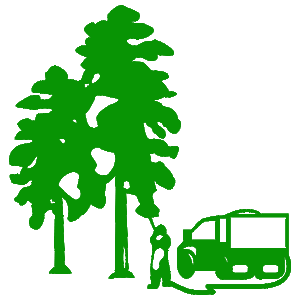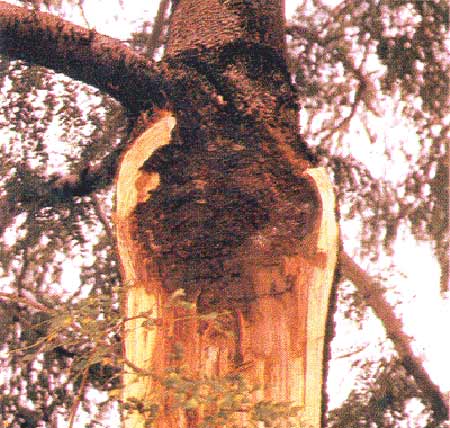Heart Rot
Heart rot is a fungal affectation of otherwise healty trees. Some of the fungi which are beneficial to the process of decay and decomposition of dead trees may also enter live trees through wounds. The infection does not usually kill the viable tissue, so an infected tree may continue to appear healthy, and well-foliated. However, the internal decay will weaken the tree’s structure. An infected tree is likely to lose limbs and branches, especially during high winds. The wood in the area of the break will often appear spongy and discolored. Externally, an infected tree may develop “conks,” which are mushroom-looking growths on the bark near the affected areas.
An infected tree should be inspected by a professional tree surgeon to determine the extent of the damage. Because there is little external evidence of heart rot in its early stages, by the time the infection becomes apparent, the tree may have damage too extensive to allow recovery. A professional tree surgeon will know how to prune and clean the infected area to assure the best chances for the tree’s recovery.
The best practice for prevention of heart rot is to maintain healthy trees through adequate watering, and proper deep-root feeding; and protecting trees from bark damage, and sealing any damage that occurs. Common sources of bark damage are lawn care tools, chains, cables, pet restraint systems, and animals such as squirrels and wood peckers.








